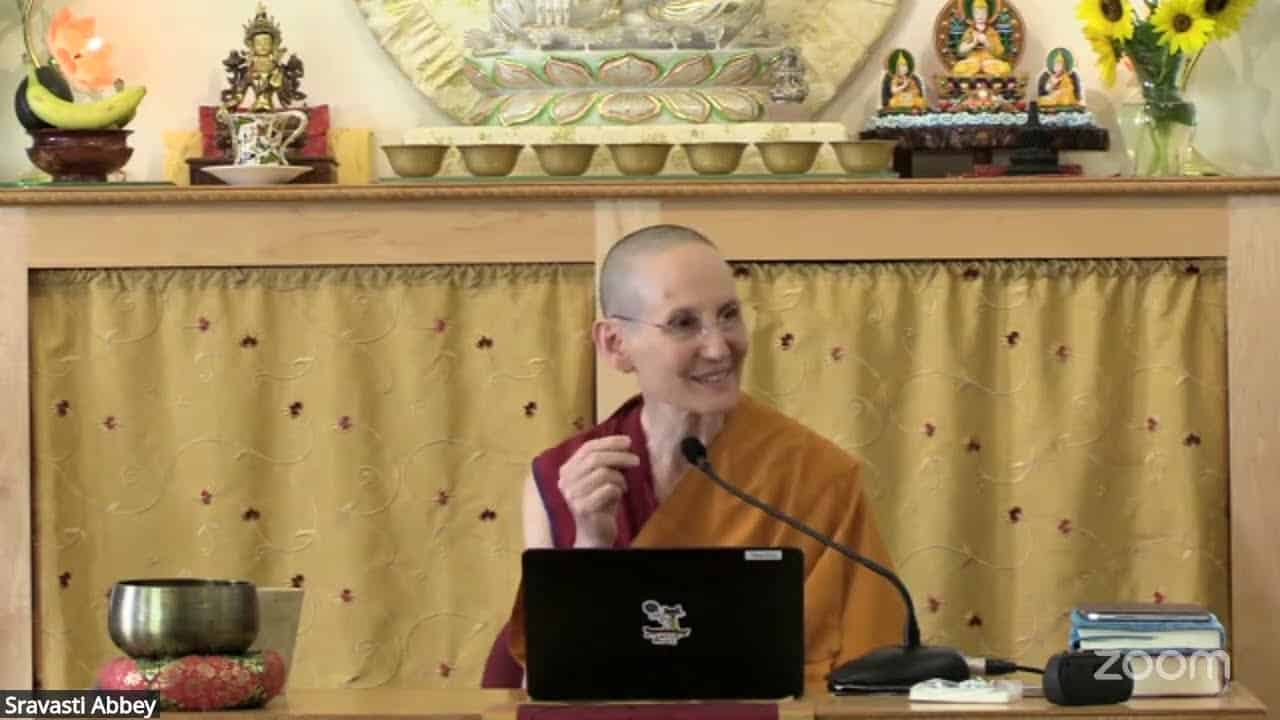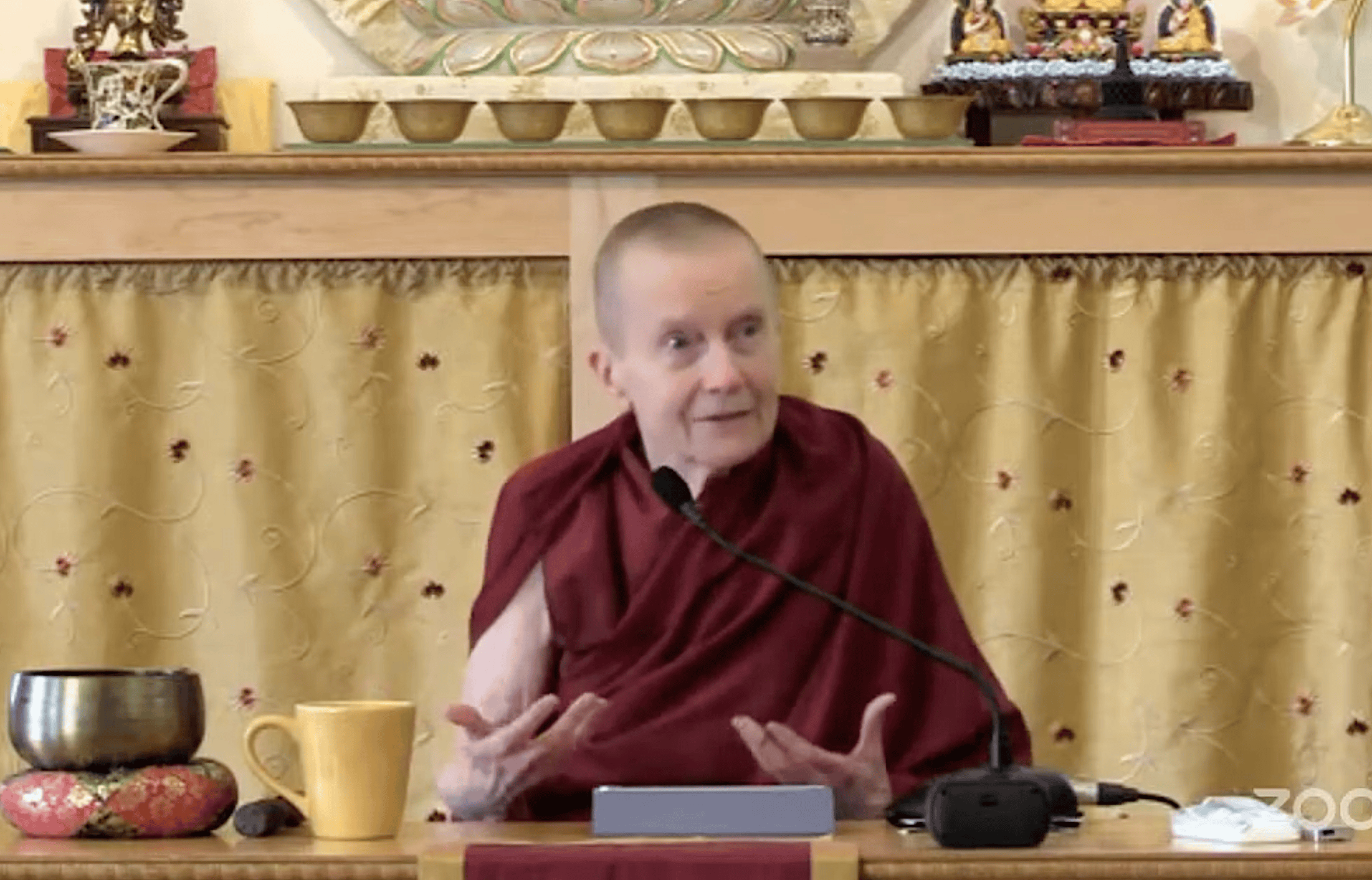Five faults eight antidotes
62 Following in the Buddha's Footsteps
Part of an ongoing series of teachings based on the book Following in the Buddha's Footsteps, the fourth volume in The Library of Wisdom and Compassion series by His Holiness the Dalai Lama and Venerable Thubten Chodron.
- Laxity and lethargy
- Antidotes for coarse laxity
- Disadvantages of subtle laxity
- Remedy for subtle laxity
- Introspective awareness and mindfulness
- Stability and clarity
- Non-application of the antidotes and over application of the antidotes
- Six powers
- Four types of attention
- Nine stages of sustained attention
62 Five Faults Eight Antidotes (download)
Contemplation points
- What is laxity? Make examples of coarse and subtle versions of laxity. How do you see these arise in your meditation sessions? What makes subtle laxity the worst fault when trying to generate serenity? What are antidotes that can be applied to each form of laxity?
- The fourth fault is nonapplication of the antidote even when we know restlessness or laxity are present. Make personal examples of this from your meditation sessions.
- The fifth fault is overapplication. It occurs when we apply antidotes to restlessness and laxity although they haven’t occurred. Make personal examples from your meditation sessions.
- Review the five faults and identify them in your own meditation. Which one is the most troublesome for your present level of development?
- Practice noticing each fault when it arises and applying its antidote. Do this over a period of time. What change do you see in your meditation?
- What are the benefits of practicing the six powers and four types of attention? Really spend some time contemplating how each helps us to develop serenity.
- Six Powers: hearing, reflection, mindfulness, introspective awareness, effort and complete familiarity
- Four Types of Attention: tight focus, interrupted focus, uninterrupted focus and spontaneous focus
Venerable Thubten Chodron
Venerable Chodron emphasizes the practical application of Buddha’s teachings in our daily lives and is especially skilled at explaining them in ways easily understood and practiced by Westerners. She is well known for her warm, humorous, and lucid teachings. She was ordained as a Buddhist nun in 1977 by Kyabje Ling Rinpoche in Dharamsala, India, and in 1986 she received bhikshuni (full) ordination in Taiwan. Read her full bio.


